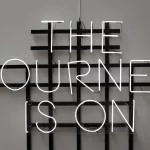What Techniques Do Interviewers Use?
In the quest for the most captivating interview techniques, we’ve gathered insights from a diverse range of professionals, including CEOs and marketing managers. Exploring methods from cultivating genuine curiosity to adopting the ‘Yes, And’ approach, here are the top fifteen strategies these experts employ to ensure engaging interviews.
- Cultivate Genuine Curiosity
- Integrate AI-Driven Insights
- Employ Behavioral Interview Method
- Pose Thought-Provoking Questions
- Utilize Reflective Listening Technique
- Implement Narrative Mapping
- Align Employer Needs and Employee Goals
- Encourage Storytelling
- Apply Socratic Method
- Foster Organic Conversations
- Use STAR Method
- Share Company Stories
- Practice Active Listening
- Build Quality Rapport
- Adopt ‘Yes, And’ Method
Cultivate Genuine Curiosity
My main technique is to go into each interview genuinely curious—not just about qualifications, but about what gets someone truly excited. I learned not to rely on scripted questions. Instead, I start by asking what energizes them most about this role. I listen closely for their true passions. Their answers guide an organic conversation about how their strengths can help us match top talent with the right companies. My goal is to create space for both of us to be open about areas we want to improve, so we can grow.
In the past, I missed chances by just mechanically checking resume bullet points without tying work to real human impact. But now I lead with empathy—that turns interviews into rewarding dialogues. When a candidate becomes animated describing how they solved a tricky challenge, I know I’ve found a driven, creative mind who can meaningfully advance careers.
 Lou Reverchuk
Lou Reverchuk
Co-Founder and CEO, EchoGlobal
Integrate AI-Driven Insights
In my journey as an entrepreneur with a strong digital marketing foundation, I’ve leveraged my knowledge in SEO and content marketing to craft engaging interviews.
One unique technique I use is incorporating AI-driven insights to tailor questions that resonate with the interviewee’s expertise and audience interests. This approach not only enhances the relevance of the conversation but also boosts the content’s visibility and engagement online. It’s a fusion of human curiosity and machine intelligence, creating a uniquely compelling interview experience.
 Ryan Doser
Ryan Doser
Co-Founder, AI Insider Tips
Employ Behavioral Interview Method
One effective technique I employ for engaging interviews is the behavioral-interview approach. This method focuses on candidates’ past experiences and behaviors, providing valuable insights into how they handle specific situations. By asking candidates to share examples of their achievements, challenges, or collaboration experiences, we gain a deeper understanding of their skills, decision-making processes, and interpersonal abilities.
During these interviews, I carefully craft questions to elicit detailed responses, encouraging candidates to provide specific examples rather than hypothetical answers. This approach helps assess not only technical competencies but also the alignment of their past behaviors with our organization’s values and culture. Furthermore, I prioritize creating a comfortable and open environment, ensuring candidates feel at ease sharing their experiences.
The behavioral-interview technique allows for a more thorough evaluation of a candidate’s suitability for a role, as it goes beyond resumes and cover letters. It helps uncover a candidate’s problem-solving skills, adaptability, and how they contribute to a team or organization. This approach has proven valuable in selecting candidates who not only possess the requisite skills but also align with our company’s values and can thrive in our dynamic work environment.
 Steven Mostyn
Steven Mostyn
Chief Human Resources Officer, Management.org
Pose Thought-Provoking Questions
As an interviewer, asking thought-provoking questions is how I ensure that interviews are engaging. The thing is, I understand that my applicants have been adequately prepared to give impressive answers to the most basic and frequently asked interview questions.
However, as I have learned, without taking extra care to ensure that interview questions are critical, thought-provoking, and are made more practical by being structured in case studies or scenarios, it would be quite impossible to avoid a situation where applicants provide memorized answers to questions and to keep them mentally engaged during the interview.
Having on my team members who are able to contribute to my team’s efficiency is always top on my priority list during interviews, and engaging questions have helped in achieving this. Thought-provoking questions help me better discern the true potentials of the applicant because the whole point of an interview is not just to select the candidate/applicant who answers questions the fastest or those who are able to come up with the best answers to the list of questions that you as an interviewer have prepared.
 Grace Chisom
Grace Chisom
Marketing Manager, Check CPS
Utilize Reflective Listening Technique
A great technique to make the interview engaging and get people to continue talking on a particular subject is to repeat the last four or five words that they just said.
For example, you’re interviewing someone about a historical event, say, and they say, “At that point, we decided the best thing to do was just call the fire department.” Then you’d simply say, “Just call the fire department,” in an even tone, with no lift at the end like a question. You’re basically repeating their own thought back to them, and their brain just automatically goes to continuing the thought. Also, this is a great relationship tool.
 Naima Ch
Naima Ch
Chief Marketing Officer (CMO), Set Alarm Online
Implement Narrative Mapping
I’ve pioneered a technique called “Narrative Mapping” for interviews. This involves asking candidates to describe a past project or role as a story, complete with challenges, turning points, and outcomes.
This approach not only reveals their problem-solving and critical-thinking skills but also their ability to communicate effectively and engage with their work on a deeper level. It turns the interview into a dynamic conversation, providing rich insights into their capabilities and fit within our team’s culture, making the process more engaging and revealing.
 David Wilfong
David Wilfong
Founder and CEO, DavidWilfong
Align Employer Needs and Employee Goals
A specific technique I use for engaging interviews is focusing on understanding both employer needs and employee aspirations. This approach ensures that the conversation is relevant and meaningful to both parties.
By asking targeted questions that delve into an applicant’s experiences and goals, and aligning these with what employers are looking for, I can facilitate a more dynamic and productive interview process. This method has been very efficient in my role as a Lead Recruiter at DayJob Recruitment, helping to match skilled workers with their ideal jobs effectively.
 Ana Alipat
Ana Alipat
Recruitment Team Lead, Dayjob Recruitment
Encourage Storytelling
Leveraging the power of storytelling in interviews has been a game-changer for me, both as an interviewer and as a candidate. This technique involves encouraging candidates to share their professional experiences through engaging narratives, rather than simply listing their achievements or skills.
By asking candidates to tell a story about a time when they faced a challenge, achieved a significant accomplishment, or learned a valuable lesson, you get to see beyond their resume. This approach not only reveals their problem-solving abilities and creativity but also their communication skills and how they engage with others. Stories are memorable, making the candidate stand out in the interviewer’s mind.
Moreover, it creates a more relaxed atmosphere, allowing for a genuine connection and understanding to develop. This storytelling method has consistently led to more insightful, dynamic, and enjoyable interviews, offering a deeper glimpse into the candidate’s character and potential fit within the team.
 Abhay Thakkar
Abhay Thakkar
Founder, CEO, and Nlp Trainer, NLP Training International
Apply Socratic Method
To cultivate engaging interviews, I utilize the Socratic method, asking open-ended questions that challenge the interviewee to think deeply and articulate their insights. This technique not only uncovers rich, detailed responses but also sparks a conversation much more dynamic than a mere Q&A session. It’s personal and tailored to each interview, ensuring authenticity and a genuine exchange of ideas.
 Valentin Radu
Valentin Radu
CEO & Founder of Omniconvert, Blogger, Speaker, Podcaster, Omniconvert
Foster Organic Conversations
A specific technique is to transform interviews into more organic conversations. By taking some of the pressure off the candidate, you’ll have more opportunity to unveil the ‘real’ person behind the responses.
 Kelli Anderson
Kelli Anderson
Career Coach, Texas General Insurance
Use STAR Method
A specific technique I use is the STAR method: Situation, Task, Action, and Result. This method encourages candidates to structure their experiences in a clear and captivating way. By asking them to describe a specific ‘Situation’ they were in, the ‘Task’ they needed to accomplish, the ‘Actions’ they took to address it, and the ‘Results’ of those actions, it allows for a deeper insight into their problem-solving and critical-thinking skills.
This approach makes the interview more interactive as you get to learn more about their skills, achievements, and how they approach challenges in a real-life situation.
 Bayu Prihandito
Bayu Prihandito
Founder, Psychology Consultant, Life Coach for Men, Life Architekture
Share Company Stories
I love to share stories about the company in terms of the company culture, success stories, or challenges that the team has overcome. Stories are memorable, and I find they can help the interviewee better understand our values and work environment.
Stories are inherently engaging and capture the listener’s attention, so by incorporating anecdotes or narratives, you create a more dynamic interview environment. Engaged candidates are more likely to retain information and find the interview memorable, and it also helps to create more of a flow when it comes to conversation.
 Curtis Feather
Curtis Feather
Founder, Franboost
Practice Active Listening
One specific technique I consistently use for engaging interviews is active listening. By truly listening to the interviewee’s responses, I can ask follow-up questions that show I value their input and encourage them to share more insights. This not only helps build rapport but also allows me to delve deeper into their responses and uncover valuable information that might not have come to light otherwise.
For example, during a recent interview with a subject-matter expert in the field of artificial intelligence, I actively listened to their explanations of complex concepts and asked probing questions to clarify certain points. This led to a more in-depth discussion that not only enriched the interview but also provided valuable insights for my research project.
Overall, active listening is a powerful technique that fosters engagement, demonstrates respect for the interviewee, and uncovers valuable insights that can enhance the overall quality of the interview.
 Colin Macmillan
Colin Macmillan
Founder, Curbwise.ca
Build Quality Rapport
Building quality rapport is key to facilitating an engaging interview. Establishing a quality connection with the interviewee is important in order to get the most out of the interview. Make sure to practice active listening, use positive body language, and start with a warm greeting in order to show the interviewee that you are trying to build this rapport with them.
Some interviewers just see the interview as the interviewee’s chance to pitch themselves to the company, but it is also a chance for you and your organization to positively sell the idea of becoming a member of the team to the candidate.
 Kate Cherven
Kate Cherven
Marketing Specialist, United Site Services
Adopt ‘Yes, And’ Method
I use the ‘Yes, And’ method for engaging interviews. In an interview, think of it as a collaborative storytelling session. You start with a question, the interviewee answers, and instead of immediately moving on, you build on their response with a ‘Yes, And’ statement. It shows active listening, encourages elaboration, and steers the conversation towards revealing insights.
Ask an open-ended question about overcoming a challenge in your previous role, actively listen, use ‘Yes, And’ to build on their story, explore specific details, and connect the story to your current role.
The ‘Yes, And’ method encourages deep insights, engaging conversation, tailored responses, and authenticity in interviews, allowing for more insightful, thought-provoking, and relevant discussions.
Maintain control of the interview flow by using ‘Yes, And’ authentically and balancing it with other questioning techniques, avoiding unnatural connections.
 Fahad Khan
Fahad Khan
Digital Marketing Manager, Ubuy India
Submit Your Answer
Would you like to submit an alternate answer to the question, “What’s a specific technique you use for engaging interviews?”






